‘Never a better time’ to buy a used EV as prices dip below ICE
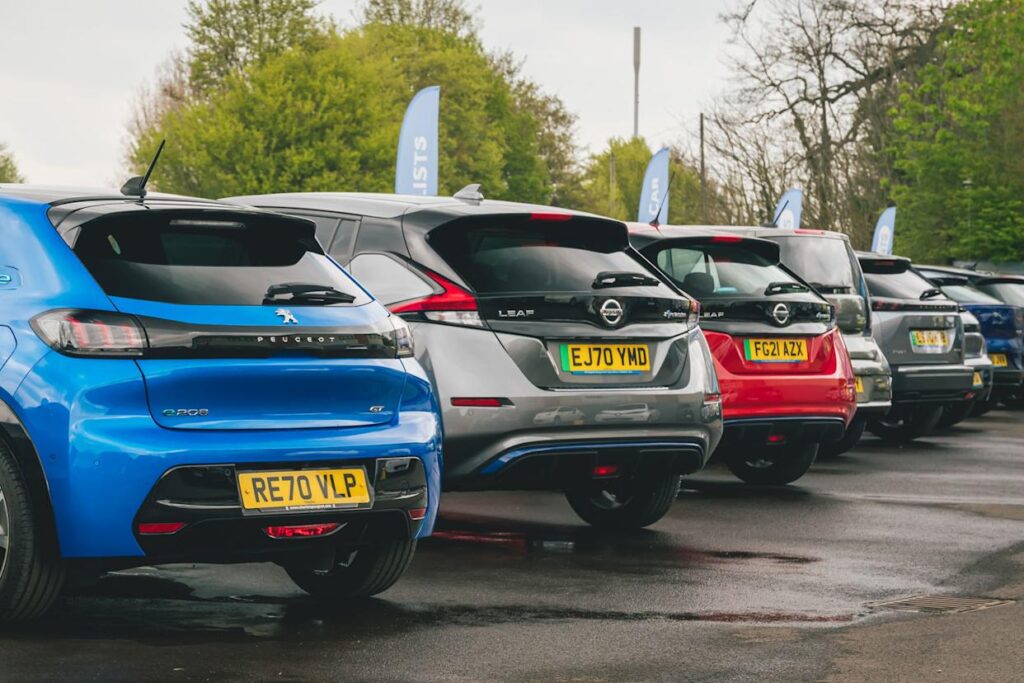
There has “never been a better time” to buy a used electric car, as they are significantly more affordable than their combustion-engined counterparts at present. That’s according to Chris Plumb, EV specialist at vehicle valuation firm Cap HPI, who told Autocar that some models “can’t get any cheaper”. According to Cap HPI, the retail price of a three-year-old electric car is now 8.5% lower than that for an equivalent petrol or diesel. For four-year-old cars, the gulf widens to 14%. The firm added that values of used EVs had halved since September 2022, regardless of their age or mileage. Plumb told Autocar that this is a result of supply and demand. EVs’ share of the new car market soared during the pandemic so now, as many of those cars come off company fleets and finance agreements, the supply of second-hand examples is soaring. “Every month we’re setting new records on the monthly volumes [of EVs] that are coming into the market, which isn’t a surprise, because everything comes back to the new car registrations from three or four years ago,” explained Plumb. He added that the dip in used prices can also be attributed to the incentives offered by manufacturers on purchases of new electric cars, with the UK’s new zero-emission vehicle mandate adding pressure to boost sales volumes. This makes used EVs less attractive in comparison, depressing values. Plumb elaborated: “Discounts on new [cars], preferable finance terms, sometimes you get a free charger thrown in as a package; when you look at what the offer is on new compared to the nearly new products or used offerings, the new offering sometimes looks a lot more attractive.” He added that older and leggier EVs can sell much more quickly than nearly new stock, because of their low prices. Plumb said: “For EVs three or four years old in the market and sitting below £20,000 at retail, so below £18,000 in trade, when we look at [how long they take to sell] from retail adverts, they are now comparable or faster than petrol. “When you get up to sub-12 months old, there becomes a bit more of a challenge, and that’s the area of the market that’s a bit more fragmented.” He concluded: “I don’t think there has ever been a better time to buy an EV, because of the new car discounts that we’re seeing and how much value for money that going used offers. “Some of these vehicles can’t get any cheaper, so we might find that they increase in value over time as consumer demand increases.” *Article published: https://autos.yahoo.com/never-better-time-buy-used-112232056.html – image(s) extracted from article
EVs are scrapped at half the rate of ICE vehicles, says cap hpi
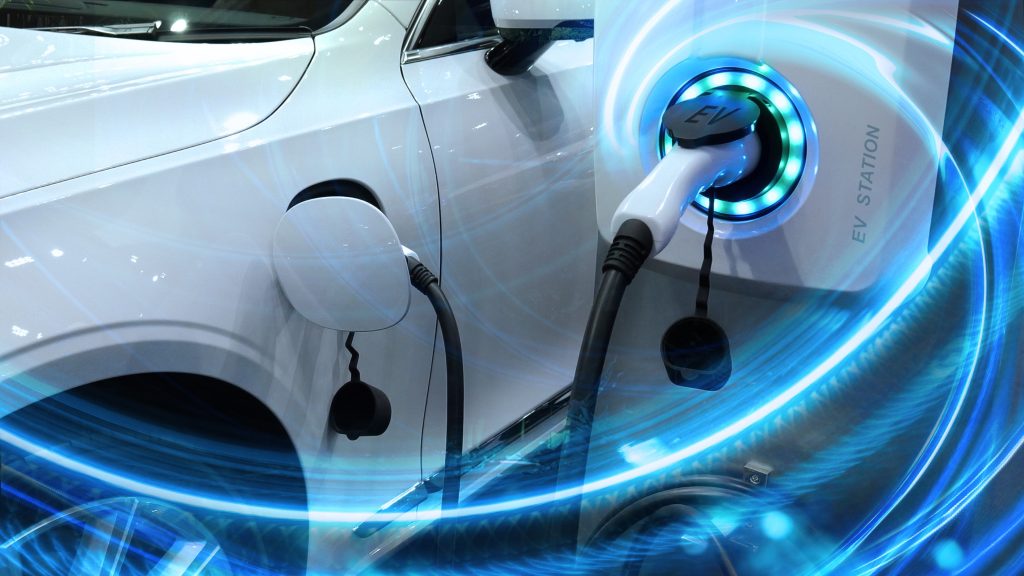
Petrol and diesel vehicles are written off and scrapped by insurers at double the rate of EVs, according to a data study conducted by cap hpi. In the pure electric vs ICE category, with regards to scrapped vehicles aged one year and under, a total of 40 EVs were scrapped out of the 334,525 on the road compared with 701 of 2,026,146 ICE vehicles. At three years and under, 782 of 912,341 EVs were scrapped compared with 10,300 of 5,788,617 ICE vehicles while at five years and under, 1,433 of 1,130,581 EVs were scrapped against 33,700 of 10,278,745 ICE vehicles. Jonathan Clay, cap hpi identification director, commented: “It’s essential that the industry has an accurate picture of emerging trends as the EV market continues to develop. “With repair costs for EVs running up to 29% higher than ICE vehicles, according to a Solera study, it’s important to understand the impact on scrappage rates.” With regards to the electric and hybrid vs ICE, electrics and hybrids aged one year and under, 203 EVs were scrapped of a total of 960,902 compared with 544 of 1,406,637 ICE vehicles. At three years and under, 2,356 of 2,389,352 EVs were scrapped, compared with 8,726 of 4,311,606 ICE vehicles while 4,635 of 3,057,881 EVs at five years and under were scrapped against 30,528 of 8,351,445 ICE vehicles. *Article published: https://www.motortrader.com/motor-trader-news/automotive-news/evs-scrapped-half-rate-ice-vehicles-says-cap-hpi-21-05-2024 – image(s) extracted from article
Used cars now selling almost twice as quickly as 2023
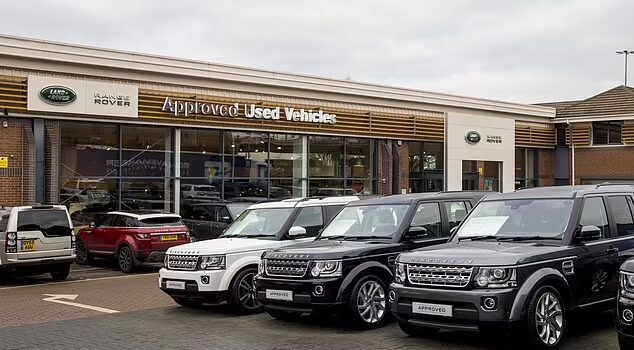
Trading platform HonkHonk reports some car models selling within two hours Used car market showing strongest sign yet recovered from last year’s crash Prices rising for all used cars in good condition Used cars are now selling almost twice as quickly as in 2023, in the strongest sign yet that the market’s bounced back from last year’s crash. Trading platform HonkHonk reports some used cars are selling to dealers within two hours of being listed on the online platform. Prices paid are also rising for models across the board that are in good condition too. In December last year, This is Money reported that the months of October and November saw a 4.2 per cent drop-off in used car prices in both months – the biggest monthly fall in average second-hand prices recorded by Cap Hpi since May 2011. That was an equivalent to an average price drop of £1,625 in just two months. But now the general recovery of the second hand market appears to be on the upwards trend again, with HonkHonk finding that cars of all styles are seeing rising demand. The ten faster sellers in recent weeks varied massively across budgets and models. It includes a standard Vauxhall Corsa worth £4,000, an Aston Martin Vantage worth £42,750 and an Audi RS3, sold for £51,000. The two fastest selling cars were a 2019 Range Rover Sport going for £34,500, and a 2022 Volvo XC40 which was bought for £27,500 – both snapped up within two hours of their owners listing them on HonkHonk. The car that remained unsold for longest was a 2006 Aston Martin Vantage Coupe, which remained on the site for 144 hours. Most cars priced at under £10,000, in good condition and with full service history, are selling within 24 hours. The slowest car to shift was a 2006 Aston Martin Vantage Coupe, which remained on the site for 144 hours. While nearly-new second hand luxury cars can sell very quickly, older models from premium badges will take longer to shift, with dealers needing to line a customer up first Fastest selling used cars in 2024 so far: Year Make Model Value Hours Days 2019 Range Rover Sport 34500 2 1 2022 Volvo XC40 27500 2 1 2017 Kia Sportage 11750 4 1 2021 Audi A1 20000 4 1 2016 Vauxhall Corsa 5dr 4000 4 1 2017 Aston Martin Vantage 42750 4 1 2023 Audi RS3 51000 6 1 2013 Nissan Qashqai 4600 7 1 2019 Mercedes GLE 35000 8 1 2020 Ford Fiesta ST 13500 12 1 2014 Volkswagen Polo 3900 20 1 2013 Citroen C1 5000 22 1 2019 Renault Kadjar 11600 48 2 2019 Mercedes C Class Cabriolet 18500 51 3 2013 Fiat 500 3500 69 3 2014 BMW 4 Series Convertible 14800 71 3 2018 Mini Countryman 15300 74 4 2015 Audi A3 8000 87 3 2012 Porsche Cayman 22500 94 3 2006 Aston Martin Vantage Coupe 16000 144 6 Source – HonkHonk Prestigious marques over ten years old need the dealer to have a customer who already wants that exact model in mind before they will make a serious offer. Despite the end of year slump, the UK’s used car market grew by 5.1 per cent in 2023, thanks to re-energised supply, levelling prices and a record year for electric vehicle (EV) sales. The Society of Motor Manufacturers and Traders (SMMT) latest figures show there were 7,242,692 used car transactions last year, with driver’s turning to more affordable second hand motors after feeling the pinch from rising costs of living. Last year motorists were often unaware that the mercy of unusually high depreciation, and refusing good offers. Dealers were subsequently urging drivers to accept the first offer they got because it was usually the best. But now that dynamic has shifted in 2024, as demand increases and dealers snap up the best cars as fast as possible. Sebastien Duval said: ‘For most other cars, whatever the size or style, demand is strong from dealers looking for stock in a market that is much stronger than last year. ‘The speed of sales we’re seeing now is very good news for consumers because no one wants a long drawn-out process when they’ve decided to sell. ‘Motorists have adjusted to more realistic expectations too, so dealers are less frustrated by having their best offers rejected – a consistent problem we reported last year – so everyone is winning.’ *Article published: https://www.thisismoney.co.uk/money/cars/article-13323727/Used-cars-selling-twice-quickly-2023.html – image(s) extracted from article
Plug-in hybrids almost double company car market share
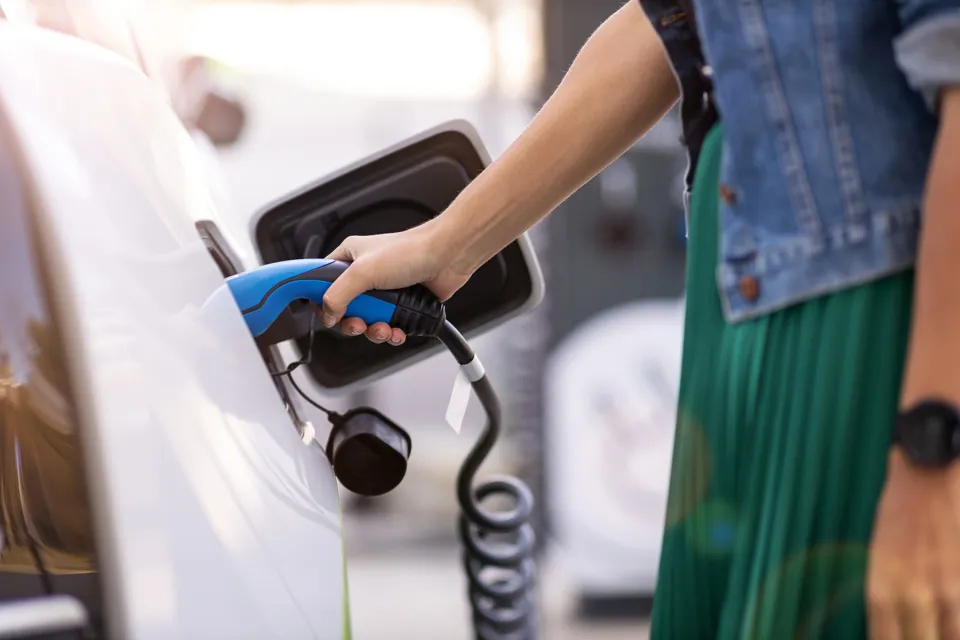
Plug-in hybrid electric vehicles (PHEVs) have taken market share from pure electric company cars, according to the latest data from Cap HPI’s Insight report. In the first two months of the year, battery electric vehicles (BEVs) accounted for more than a third (35%) of the fleet market, down from almost half (44.5%) at the start of last year. Diesel and petrol market share also fell, from 5.4% to 4.5% and 30.1% to 28.1%, respectively. However, Cap HPI analysis suggests that PHEV market share almost doubled from 14% at the start of last year to 26.6% in the first two months of 2024. Andrew Turner, senior product specialist at Cap HPI consulting, said: “The first two months have been a strong period for PHEV, with the Insight market share growing by over 12%, whereas BEV share dropped by nearly 10% while retaining the highest overall fuel share in this market. “The BEV share of 35% is somewhat down on the overall 2023 share of nearly 49%.” In terms of total fleet registrations, Cap HPI says that they were some 9.7% lower than the same period last year. Looking at individual fuel types, diesel volumes fell by 25.2%, BEV by 29.1% and petrol by 15.7%, while PHEV increased by a marked 71.7%. Turner explained: “The market experienced a fall at the start of the year against a stronger 2023. It’s likely driven, at least in part, by the slow start to BEV registrations we’ve seen in 2024, given their huge popularity in this sector.” Cap HPI’s analysis comes after new car sales figures from the Society of Motor Manufacturer and Traders (SMMT) for March showed that petrol cars retained the lion’s share of the overall market, at 55.7%, with registrations up 9.2% year-on-year, as diesel volumes fell 2.7% to account for just 7.3% of demand. Uptake of hybrid electric vehicles (HEVs) reached record levels, rising by 19.6% to 44,550 units and 14% of the market, while the biggest percentage growth was recorded by plug-in hybrids, up by more than a third to 24,517 units, or 7.7% of all new registrations. Looking at the popularity of individual models in the fleet sector, Cap HPI reports that the Audi A3 made a strong start to 2024, with the PHEV versions leading the way. The two Tesla ranges make up the top three for February. Year to date, 2023’s highest volume fleet car, the Tesla Model Y, has climbed to third. February 2024 Jan-February 2024 (YTD) 1 Audi A3 1 Audi A3 2 Tesla Model Y 2 Volkswagen Golf 3 Tesla Model 3 3 Tesla Model Y 4 BMW i4 4 Tesla Model 3 5 Volvo XC40 5 Volvo Xc40 6 Volkswagen Golf 6 Skoda Octavia 7 Kia Niro 7 Kia Niro 8 Skoda Octavia 8 MG Motor UK MG4 9 Toyota Corolla 9 BMW i i4 10 CUPRA Born 10 Kia Sportage *Article published: https://www.fleetnews.co.uk/news/plug-in-hybrids-almost-double-company-car-market-share – image(s) extracted from article
Annual mileage comparison: petrol and diesel drivers vs. electric car owners
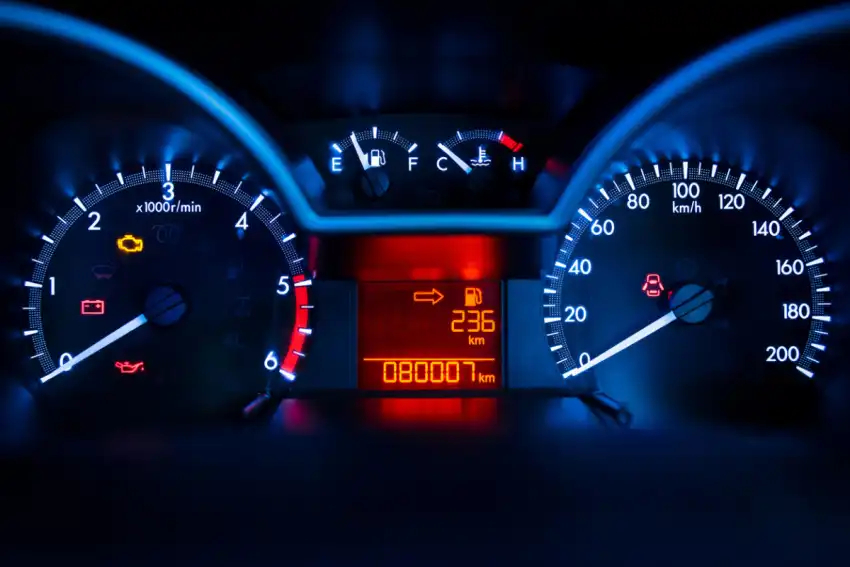
The results are closer than you might think, with one group doing 743 more annual miles… Recent analysis indicates that electric vehicle (EV) drivers in the UK are utilising their cars nearly as much as those with traditional petrol and diesel models. Contrary to the perception that electric cars cannot serve as direct substitutes for combustion engine vehicles due to concerns about battery ranges and charging infrastructure, data from used car information provider Cap hpi suggests that EV owners are challenging these doubts. Cap hpi’s examination of used car data reveals that, in 2023, the average EV owner covered 8,292 miles, only 743 miles less than drivers of petrol and diesel models of 9,035 miles. Notably, experts conducting the research highlight a trend where EV owners are progressively increasing their mileage, while drivers of conventional cars with combustion engines seem to be using their vehicles less frequently. The analysis, encompassing approximately 17.4 million cars on UK roads from 2014 to the present day, sought to establish average annual mileage figures. The data reflects a shift in EV usage patterns, with advancements in battery technology, increased mileage ranges, and enhancements in charging infrastructure contributing to the growing confidence of EV drivers. The overall analysis indicates a shift in average mileage for all cars, from 11,381 miles per year at the beginning of 2014 to 9,654 miles per year up to February 2024, marking a decrease of 1,727 miles on average. By the end of 2023, excluding EVs, the average UK vehicle mileage was recorded at 9,035 miles per year. Consequently, the average annual mileage of petrol and diesel cars is only 9% higher than that of EVs. Dylan Setterfield, Head of Forecast Strategy at Cap hpi, observes that the convergence between EVs and internal combustion engine (ICE) vehicles is becoming evident. He stated, ‘The figures from the past decade indicate that drivers drove fewer miles per year overall from 2014 until the beginning of the pandemic. ‘The data indicates that there is now a clear convergence emerging between EVs and ICE [internal combustion engine] vehicles. ‘EVs now have much longer ranges, and the charge point network is constantly improving, but we’re also seeing that EV drivers have much more faith in their vehicles and have become more adept at planning their journeys and managing longer trips.’ He mentioned that the significant drop in average mileage during the pandemic and subsequent lockdowns has been consistently rising. However, the overall average still hovers approximately 1,000 miles per year lower than it was at the conclusion of 2019. He added, ‘The pandemic undoubtedly altered the way drivers use their cars forever,’ he said. Interestingly, a recent study by Zenith found that 48% of EV owners in the UK maintain a petrol or diesel vehicle as a backup for longer trips, indicating a lack of confidence in relying solely on electric cars and charging networks for distances exceeding 60 miles. In summary, the data suggests a notable evolution in EV usage patterns, debunking the perception that electric cars are impractical for regular and long-distance driving. With advancements in technology and growing driver confidence, the convergence between EVs and traditional vehicles is becoming more evident, challenging preconceived notions about the practicality of electric transportation. *Article published: https://www.regit.cars/car-advice/electric/annual-mileage-comparison-petrol-and-diesel-drivers-vs-electric-car-owners – image(s) extracted from article
Is this the most overlooked reason that private buyers are turning away from electric cars?
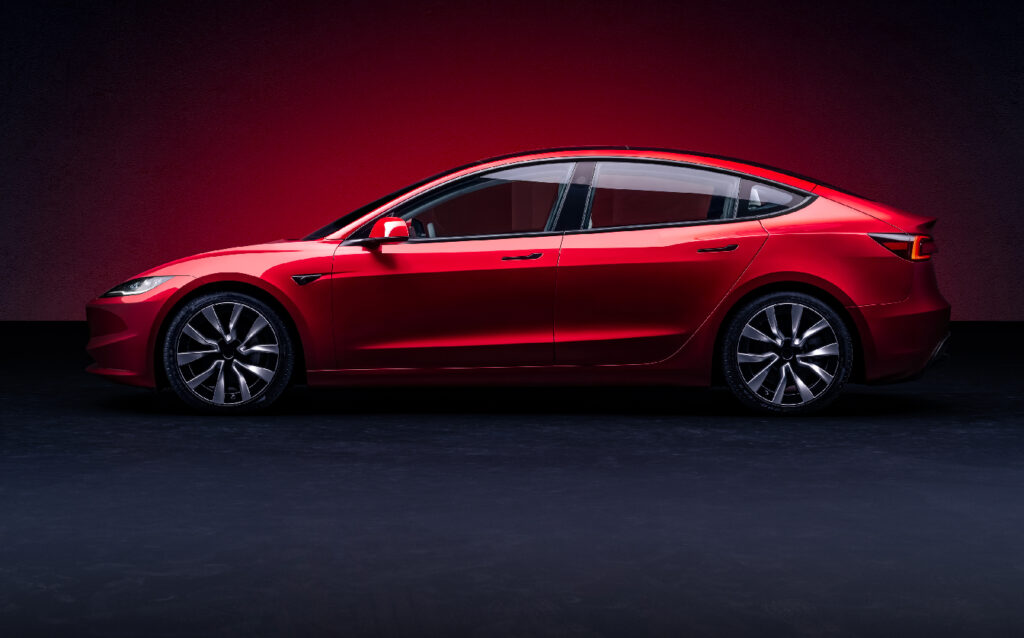
There are a number of reasons new EVs are falling out of favour with private car buyers, but one factor is often overlooked The reports of cooling demand for electric cars are greatly exaggerated; sales of new EVs actually increased 21 per cent in January, compared with the same month in 2023. But there is a kernel of truth because sales to private buyers last month fell by 25.1 per cent year-on-year. It was only because companies are snapping them up for their fleets (up 41.7 per cent) that there was a net gain. Companies get generous tax breaks to buy battery electric vehicles, and employees look at the ultra-low benefit-in-kind costs and realise it’s by far the cheapest way to get behind the wheel. -Advertisement-The Society of Motor Manufacturers and Traders (SMMT) is concerned about this, which it has identified as an “ongoing trend that will undermine Britain’s ability to deliver net zero”. In other words, unless it’s addressed the UK will find it harder to meet our environmental commitments. One cause of the issue the organisation and other experts have identified is high energy prices, which we’ve all felt since Russia invaded Ukraine. Adding to the problem, the SMMT says, is the fact that if you plug an electric car into a public charging point the government adds 20 per cent to the cost as VAT. Do the same at home and VAT is only charged at five per cent. This means rapid charging on motorways has become ridiculously expensive. One of my top-ups last year, on a trip to Scotland, cost me £51.12 (64.71kWh at 79p/kWh), of which £8.52 was VAT. I was driving a BMW i4 M50, which was averaging around 3.5 miles per kWh. That means that £51.12 added 226 miles of range. I can imagine diesel (and indeed petrol) car drivers choking on their coffee at this point, as an equivalent internal combustion engine (Ice) car would have got me across the border without having to stop, and for around the same cost. Cutting VAT would help… but only a little. It’s still true to say that charging at home makes EVs much cheaper than Ice cars per mile but if you have to use motorway chargers regularly, the cost of charging is a genuine concern. I have a friend who says he’s going to swap his pure-electric Genesis GV60, which he loves, to a hybrid for this very reason; because he spends a lot of time on motorways, the economics for him don’t add up. Other reasons cited for private buyers choosing not to buy new EVs include the removal of subsidies such as the plug-in car grant, which cut the retail price of new electric vehicles. There’s also the current high interest rates resulting in PCP finance deals that are now much more expensive than they were before Liz Truss’s “disastrous mini budget” (as it shall forevermore be remembered). Commentators also point out that by moving the cut-off date for sales of new petrol and diesel cars from 2030 to 2035, current Prime Minister Rishi Sunak was effectively telling motorists they can put off their EV purchase. But one often overlooked issue might be having an even bigger impact on private sales of new EVs: what’s going on in the used car market. SMMT figures released today show that, again, electric vehicle sales are growing. In fact used EV sales are up 90.9 per cent year-on-year. However, they still only represent 1.6 per cent of the total market. Buying a used car makes much more sense to me than buying new because of depreciation: the fall in value of a car over time. Most cars lose 50-60 per cent of their value over their first three years, and I just can’t stomach — or afford — that sort of money-torching. I’ve bought cars on PCP, yes, but only cars more than three years old. The problem for electric cars might be becoming even more exaggerated. In the recent past, EV residuals have been extremely strong because they were in high demand and short supply. But that’s changing as the surge of new electric cars that have entered the market in the last few years begin to enter the secondhand market.. “As stock levels have increased into the used car market, prices have gradually been pushed downwards,” said Richard Peberdy, UK head of automotive at consultancy firm KPMG. At the end of January, vehicle valuation experts Cap HPI put a value on that: as reported in Fleet News, “Battery electric vehicles (BEVs) and plug-in hybrids fell by 1.8 per cent at the three-year age point, equivalent to over £425, with BEVs dropping by 1.9 per cent (£720) at one-year-old.” That compared with a 0.1 per cent drop for petrol, diesel and hybrid cars. Peberdy identified that as good news for used car buyers but a problem for dealers. “While still higher than pre-pandemic, a lowering of prices is of course good news for many people looking for a vehicle. But the depreciation rates have been hard to take for some sellers, particularly those who bought certain EVs from new.” It’s also clearly going to be a problem for new car buyers. Why would you buy a new electric car when its value is likely to plummet even faster than a petrol equivalent? And there’s also the fear that, as with the latest laptop, TV or other tech item, it’ll be obsolete within a couple of years as more advanced versions are rolled out in rapid succession. Elon Musk isn’t helping things. His car company Tesla, which sells by far the most popular EV of 2023, the Model Y, has cut its new car prices without warning on several occasions to compete with a flood of new rivals from China. This has meant that some people who bought a Tesla last year woke up the following morning to find it was worth several thousand pounds less than they thought. That makes buying new
The second-hand cars soaring in value – and an EV tops the lot
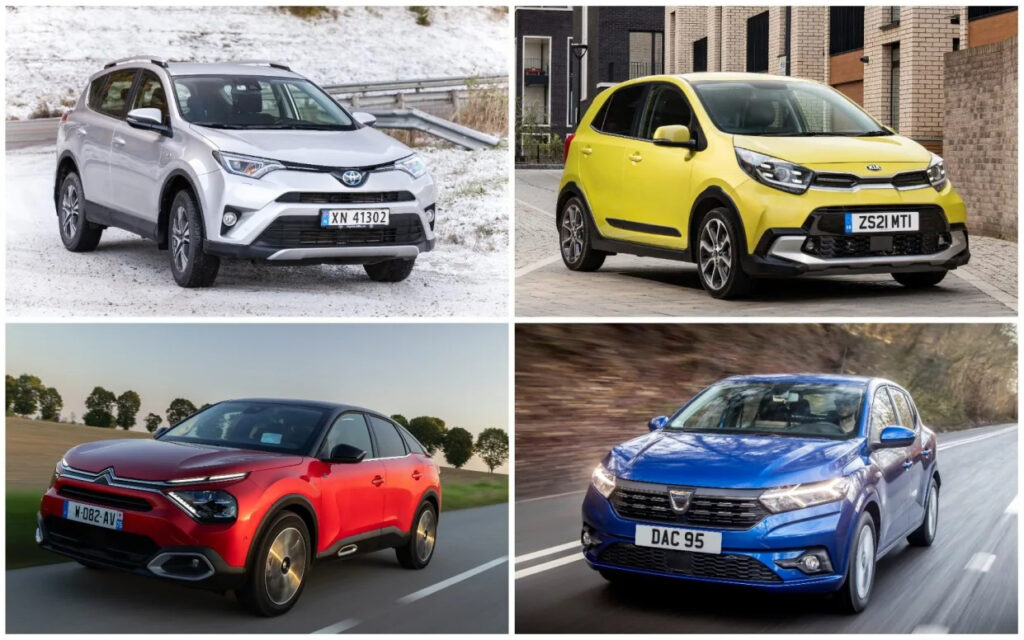
It has not been a pretty picture on car forecourts. Towards the end of 2023, used values started to slide dramatically, perhaps bursting the bubble caused by a lack of new car supply post-Covid pandemic – or, if not, at least deflating it somewhat. According to Cap HPI, which keeps tabs on used car values for dealers, used prices dropped 10.5 per cent in the last quarter of 2023. And while it’s true that values always tail off in the run-up to Christmas as buyers are preoccupied with the associated costs, seasonality was only part of the problem; values simply don’t normally fall by this much, even toward the end of the year. But while those figures reflect a market-wide trend, not all cars have dropped in value. Some have been driven up by customer demand even in this falling market. That’s evidenced by data released last week by Motorway, showing the 10 cars whose values rose the most in 2023, based on the trade prices being paid by dealers for used cars purchased via Motorway’s online auction platform. Commenting on the study, Alex Buttle, the co-founder of Motorway, said: “Despite the market at large seeing a decline in average used-car values at the end of 2023, a number of cars bucked the trend and maintained their values, with some even increasing year on year. “Our data looked at the average sold price on Motorway, for makes and models under five years old, from 2022 to 2023. Interestingly, from the data we can see that compact city cars dominated the top 10, as drivers looked to save on running costs, adopting cost-efficient petrol, diesel, hybrid or electric models.” It’s worth noting that retail prices paid by buyers will differ from the trade prices quoted in the study. But given that dealers only tend to buy models they know will sell well, the figures still give us a very strong indication of which cars are in demand on the used market. If you own one of these, in other words, the good news is that dealers are keen to buy your car, meaning it could even be worth slightly more now than it was a year ago. If you’re planning to sell it or trade it in, now might be a good time. The top 10 cars which went up in value in 2023 10. Toyota RAV4 Average price in 2023: £28,188.50 Average price in 2022: £23,588.70 Price increase, year-on-year: 19.5 per cent It should come as no surprise that the RAV4 is in demand. It combines Toyota’s stellar reputation for reliability – which has only been boosted by the addition of a great warranty offer – with a practical SUV body, a de rigueur hybrid powertrain and four-wheel drive. For many used car buyers, in other words, it ticks all the boxes. 9. Honda Jazz Average price in 2023: £12,623.50 Average price in 2022: £10,304.90 Price increase, year-on-year: 22.5 per cent The Jazz may have fallen out of favour with some insurers thanks to a spate of catalytic converter thefts – but most used car buyers either don’t know yet or don’t care, as the Jazz is still one of the most sought-after secondhand buys. And the Jazz’s uniquely practical interior, excellent reliability record and easy-going demeanour mean it’s a perennial favourite. 8. Dacia Duster Average price in 2023: £11,161.00 Average price in 2022: £9,111.02 Price increase, year-on-year: 22.5 per cent Given the trend for SUVs and these straitened times, it should come as no great surprise that an SUV that’s low on cost and high on space, yet stylish and decent to drive, is proving so popular as a used buy. The Duster is a cracking little car that offers much of what its SUV competitors do, yet at a much more reasonable price. No wonder it’s in demand. 7. Kia Picanto Average price in 2023: £9,426.50 Average price in 2022: £7,632.79 Price increase, year-on-year: 23.5 per cent The Picanto is now the cheapest brand new car in the UK and second-hand it’s just as affordable. Nearly-new examples also benefit from Kia’s long warranty, which means even three-year-old cars have four years’ warranty remaining where their rivals’ have just run out. Throw in delightful driving dynamics and a smart, spacious interior and the little Kia comes with a big list of reasons buyers are keen on it. 6. Citroën C4 Average price in 2023: £11,194.00 Average price in 2022: £8,991.16 Price increase, year-on-year: 24.5 per cent Given Citroëns aren’t often known for holding their values brilliantly, it’s a bit of a surprise that this latest generation of C4 is in such demand. It could be that buyers are tempted by the blend of comfort and space, or it could be that the arrival of the costlier electric model to the market in greater numbers has dragged up prices. Either way, the C4’s values have rocketed since last year. 5. Vauxhall Corsa Average price in 2023: £8,305.00 Average price in 2022: £6,617.53 Price increase, year-on-year: 25.5 per cent It should come as no surprise that one of the UK’s best-selling cars features here – all the more so given the paucity of supply of its main rival, the Ford Fiesta, formerly a used bestseller. With Fiesta production ending in July 2023, the used market is crying out for small, affordable hatchbacks with low running costs and good dealer networks to replace it – and the sharply styled Corsa is the obvious alternative. 4. Hyundai i10 Average price in 2023: £8,261.00 Average price in 2022: £6,530.43 Price increase, year-on-year: 26.5 per cent The i10 is closely related to the Kia Picanto and is popular for very similar reasons: good value, lots of space for its size, low running costs, an interior that feels plusher than you’d expect and impressive reliability. The i10’s relatively newer design has meant it’s proven more popular than the Picanto with used buyers – despite the fact it doesn’t have quite such a long warranty. 3. Toyota Aygo Average price in 2023: £8,849.00
Are you knocking £2,000 off car’s value because of bad habit behind the wheel?

It’s nothing to do with the way you drive Car dealers won’t pay the full price of a vehicle if it’s been damaged by the habit. DRIVERS are shocked to discover that a bad habit behind the wheel could be slashing their cars value. And the costly blunder – which can knock £2,000 of the total value of your car – has nothing to do with the way you drive. Heavy smokers could loose thousands of pounds when they decide its time to sell their motor. Car dealerships are reluctant to pay the full market value for a second hand vehicle with an ashy stench. Cap HPI – a car valuation expert – has warned smokers that they risk “easily losing up to £2,000” when they trade in a vehicle. This is based on a car that would have an estimated value of £15,000 to £20,000 if owned by a non-smoker. The director of valuations at Cap HPI, Derren Martin, said: “Smoking inside a car is very bad news as far as vehicle resale health is concerned. “The first thing a car dealer will do when looking at a car being sold by a smoker is to knock down the price of the part exchange. “That’s simply down to the fact that a car for part-ex has to be made fit for resale, and this becomes considerably more difficult and expensive when that car was previously driven by a smoker.” The two main impacts smoking has on a vehicle are physical damage to the interior and smell. Cap HPI says the smell decreasing the value is something many smokers are often unaware of. Derren says dealers have told cap hpi that they will refuse to buy cars from smokers because of the time and expense of removing odours and marks. “In the majority of cases, there is often no obvious damage, however, the smell of smoke is a major problem for motor dealers,” he explained. “Smoke becomes ingrained in the fabric of the car and climate control system, requiring a professional valet and specialist tools to clean the air conditioning. “Many of the tobacco smoke pollutants from cigarettes attach to surfaces and build up in the internal systems from where they can be released back into the air over days and weeks after smoking,” he added. Smoking can make cars have an unpleasant smell which leads to car dealerships not paying the market value for the vehicle *Article published: https://www.thesun.co.uk/motors/25414638/car-bad-habit-behind-wheel/ – image(s) extracted from article
Solera UK is already prepared for any potential blackouts in the UK

Solera UK is already prepared for any potential blackouts in the UK Whilst winter blackouts have potentially been forecast by the National Power Grid early in 2023, the owner of cap hpi, Audatex, Autodata & Hollander International is ready for them. [date] 2022, LONDON – Solera Holdings, Inc., the parent company of cap hpi, Audatex, Autodata and Hollander International, says that work behind the scenes has already taken place to ensure that, if potential blackouts across the UK become a reality, its data, content and software services will remain up and running for any business able to use them. The news comes in response to the Government setting out its worst-case scenario plans to manage the potential for energy blackouts during the first few months of 2023, according to National Grid boss John Pettigrew. In 2022, Solera initiated a major exercise in safeguarding its data and content resources for its UK businesses, ensuring that, were some form of local or global problem to ensue, Solera’s services would remain unaffected by this activity. Chris Wright, VP of Sales for Solera UK commented: “Speculation continues to mount regarding a UK energy crisis – both in terms of cost and supply. If the worst happens, periodically, the lights may literally go out across Britain. As we understand currently, businesses are being prioritised over domestic properties. Notwithstanding this, our Business Continuity plan continues to be rigorously tested and the Data Centres which support our operation have the capability to run indefinitely without “street power”. We therefore foresee no degradation in our ability to provide customers with our data and software applications.” ABOUT SOLERA Solera is a leading global provider of integrated vehicle lifecycle and fleet management software-as-a-service, data, and services. Through four lines of business – vehicle claims, vehicle repairs, vehicle solutions and fleet solutions – Solera is home to many leading brands in the vehicle lifecycle ecosystem, including Identifix, Audatex, DealerSocket, Omnitracs, eDriving/Mentor, Explore, CAP HPI, Autodata, and others. Solera empowers its customers to succeed in the digital age by providing them with a “one-stop shop” solution that streamlines operations, offers data-driven analytics, and enhances customer engagement, which Solera believes helps customers drive sales, promote customer retention, and improve profit margins. Solera serves over 300,000 global customers and partners in 100+ countries. For more information, visit www.solera.com.
